人教版新目标初中英语七年级下册Don’t eat in class说课稿5篇
-
- 页数:12页
- 字数:约 16351 字
- 大小:95.00KB
- 格式:.doc
- 版本:Office2016及以上版本
- 作者:Murphy
Don’t eat in class说课稿5篇
Don’t eat in class.Section A (1a, 1b, 2a~2c, 4)说课稿
Good morning, everyone. Im honored to be hereto give you my presentation. The topic of this unit that Ill say is"Dont eat in class". In this unit students learn to talk about rules.If you want to be good students, dont break the school rules. The rules aregood for you study. Ill prepare to say the lesson from six parts. That are:Part 1,my analysis of the teaching material; Part 2, teaching important points;Part 3, teaching difficult points; Part 4, activity in class; Part 5,blackboard design; Part 6,homework.

Part1Analyzing the teaching material
First, I will talk about my understanding ofthis lesson. Its the first one of unit 12, so if the students can learn itwell, it will be helpful to make the student learn the rest of the unit.
Second, I want to talk about the students, The studentscan further develop their autonomous learning ability, cooperative learningability and investigative learning ability.
Third, knowledge aims. make students to masterthe following new words and sentences in class.
Rule, hall way, classroom, fight, Ms, outside,dining...
Dont arrive late for class.
Dont run in the hallway.
Dont eat in the classroom. ...
Can we eat in the classroom?Yes, we can / No, wecant.
Part2Teaching important points
(1) New words and phrases.
Read thenew words and phrases to the students and ask them to repeat. Make sure everystudent knows the meaning and can read them.
(2) To improve the students abilities oflistening, speaking, reading and writing.
I willfollow the task-based method and student-centred method with the help of thetape recorder and multimedia.
(3) To develop the students interest in English.
(4) To train the students ability of working inpairs.
Part3Teaching difficult points
(1) How to write the right whole sentences.
(2) Develop their communicate ability. Act outtheir our dialogue.
Part4Activity in class
Teacher shows the students some pictures, thenlet the students talk about them with "Can you/we...?".
Eg: —Can we arrive late for class?
—No, we cant. We cant arrive late forclass.
Ask the students to make up a similar dialogue.It can make the students reach a better understanding of the lesson by makingthe class lively and interesting. At the same time, it arouses the studentsinterest in learning English.
Part5Blackboard design
Part 6Homework
(1) Copy the new words and the sentences theylearnt today.
(2) To sum up our school rules, use "can,cant and dont".
(3) To find out some signs around us and try todraw them out.
(4) Ask students to prepare the next lesson.
Thats all! Thank you!
Don’t eat in class.Section A 1a to 4说课稿
Section A 1a to 4
教学内容和步骤
教学意图和说明
Step1 Warming up
After greeting, teacher says:" Im happy. Do you know why"
Let the students guess.
Tell them:" Because I heard a nice song. Do you want tolisten to it "
"What do you think of the song "
"Do you like listening to music "
"Can you listen to music in the classroom "
讲授新课之前与学生自由交谈,可以消除学生的紧张感和对英语学习的畏惧感.让学生猜测还能激发学生兴趣,很快把学生的思维引导到学习中.音乐是大部分学生所感兴趣的,谈论音乐贴近生活,并且让学生有话可说,顺理成章的引入话题.
Step2 Presentation
Take out an apple.
T: Can I eat an apple in class now "
Ss: No, you cant
T: Can you eat apples in class now
Ss: No, we cant.
Repeat it with a cigarette.
Can和cant 的句式在七年级上册书已经有所讲授,但是用法有所差别,不再是用can和cant表示能力,而是表示许可.所以可以轻句型而重用法.运用实物讲授知识,既直观形象,又方便有效.
Step3 Practice
Show the students some pictures ,then let the students talk aboutthem with" Can you/we…"
S1.Can we arrive late for class.
S2.No, we cant. We cant arrive late for class.
巩固刚学过的新知识,除了一些机械操练外,更重要的是设计有意义的句型操练加以巩固和记忆,这一部分联系可以发散学生思维,想出各种课堂上能或不能做到事情,为同桌练习可以扩大练习面,让每一个学生都有开口的机会.
Step4 Game
Every student makes a list of six rules. Use "can" inthe rules. Put the rules in a bag. And take a different set of rules out. Nowfind the students who wrote these rules.
把刚才的听说转化为书写,但是以游戏方式给出,可以降低学生的畏惧感,提高学生兴趣.调动学生各方面的情绪,激活他们已有点知识水平.既复习句子,有活跃了课堂气氛,让学生在轻松中完成知识的积累.
Step5 Listening
Finish Section A 2a 2b
听力练习检测所学到知识的掌握和情况.提醒学生做听力练习注意听对话的语气语调,学会抓关键词,听重点.
Step6 Presentation
Show the students some picture of the students who are breakingschool rules and ask:" Can we …"Present "Dont…"
再一次巩固所学知识的掌握情况.同时引出本单元重点知识:祈使句.用cant替代dont的用法,降低难度,便与理解.
Step7 March
Finish Section A 1a
书上的图片形象直观,让学生明白祈使句的用法与作用.同时也可以对学生进行思想教育,要求学生遵守校纪校规.
Step8 Listen
Finish Section A,1b
First, let the students guess what rule Peter/Selina/Nick isbreaking.
听力练习最应该注意的是听力策略,这部分内容可以让学生猜一下,在降低难度的同时,让学生有更高的热情参与到本环节中.
Step9 Competition
Have a competition between boys and girls; let them say as manyschool rules as they can
T: There are many school rules in our school. Can you name any ofthem
S1: Dont eat in class.
S2: WE cant fight…
这部分是对本课所讲授知识的总结,以达到查漏补缺的效果.由于七年级学生好胜心比较强,通过比赛形式可以来检查课堂教学成果,可以引起学生的兴趣和共鸣,发散学生思维,充分发挥学生的想象力和能动性,激发学生的表现欲.
Step10 Homework
To sum up our school rules.
To find out some signs around us and try to draw them out.
布置作业可以巩固在本节课中的学习内容,也要学生学会为下节课做一定的课前准备.
Don’t eat in class.第一课时说课稿
各位评委大家好:
我是( )号。今天我说课的内容是七年级下册的第十二单元section A的第一课时。我的说课主要内容包括4个部分:
一、 教材分析
(一)教材的地位和作用
本节课是十二单元section A ,谈论的中心话题是rules in school, 主要语言功能是谈论并制定某些校规、班规,句式结构为祈使句否定句的使用,情态动词can、can’t表示许可和不可以的用法和情态动词have to句式的变化。围绕校园教室行为活动的许可和禁止这一中心话题,结合学生生活实际,从基本语言知识到语言综合运用,层层递进,读、听、说依次展开,引导学生思考、学习和运用语言,对学生起到规范教育作用。我计划将section A分成两节课进行讲授,本课时在本单元中主要是让学生初步感知了解祈使句,能简单的谈论校规,主要目的是训练学生的读、听、说能力。
(二)教学目标
1、知识与能力目标
(1)语言知识目标:通过学习使学生掌握并能熟练运用词语、句型。
学习并掌握词汇:rule, arrive, classroom,hallway,outside, fight, uniform, sports shoes, dining hall, have to
掌握交际用语:
Don’t eat in class!
Can you wear hats in school?
Do you have to wear a uniform at school?
What do you have to do ……
What are the rules ?
No talking!
(2)语言技能目标:能运用所学词汇、句型表达校园班级所禁止的行为举动,并能够进行行为提问和作相应的回答,能正确使用情态动词can,have to和祈使句。
2、过程与方法目标:培养学生自主学习的能力、语言综合运用能力、听力、英语表达能力、与他人合作会话的能力。
3、情感态度与价值观目标:
(1)在教学中积极鼓励班级中开口较少的同学进行表达,能够进行规定的列举。
(2)提醒学生自我规范在班级行为。
(三)教学重点与难点
1、 教学重点:
A新词汇及动词短语(如rule fightoutside loudly…)
B目标语言:--`Don’t do ……..
Canyou wear hats in school?
Wecan’t listen to music in the classroom.
We\you have to clean the room.
2、教学难点:A掌握情态动词can,have to和祈使句的正确用法。
B运用句型进行口语表达交流。
3、解决措施:通过老师示范引导、词组替换训练、图示标志识别和口语表达能力拓展训练等措施使学生逐一突破教学重难点。
4、教学方法:归纳对比法、听说法、识图法、情景对话法。
二、教法分析
本节课中主要要突出学生主体作用,教师要进行有效引导。结合本单元教学内容和学生的学习情况,本课程主要采用任务型教学、开放性教学策略,以听说为主,可按照需要适当调整教学内容的先后顺序。
三、学情分析
班级中学生多是农村学生,英语学习积极性差,虽然基本掌握简单表达的能力,但缺乏英语整体思考及表达能力。因此,本人充分利用学生对班级、学校规定的熟悉,先设计场景,引起学生对制度规定的联想,然后引导学生进行的列举已知的校规和班规,再引入英文的单词的学习,进而推出祈使句否定句,进行校规禁止行为举止的表达,随后进行can’t can / have to的引入和教学,努力营造出一种自然、生动、活泼、有序的学习气氛,以吸引学生的注意力,激发学生的学习兴趣,在实际授课训练时,将对这些同学进行专门的提问和训练。
四、教学过程
时间
教学步骤
活动内容
设计思路
1 min
1.Leading-in
2.Presentation
3. New drills
4.Presentation
5 .listening
6. Pairwork
7. Groupwork
8. Drill
(Writing)
9.Homework
Greeting and warm up
T: Hello, boys and girls .
S: Hello, Mr Tang.
T: What’s the weather like today?
S: It’s sunny.
T: What did you do last weekend?
S1:I。。。。。.
S2:I went to the 。。。。。.
T: Did you have a good time?
S: Yes,。。。。
S: No, …….
Play the game--”Hot Seat”. The teacher says some orders. Get the students to give out the opposite orders.
T: Sit down.----Can’t sit down
S: yes
T: Drink water .
S: Can’t drink water.
T: Run
T: Can’t run.
T:Good. You can’t drink water in class. This is one of the school rules. Today We’ll learn Unit12.Don’t eat in class. We’ll learn how to talk about rules.
Let’s have a look at other new words
Teach the new words:
Fight
hallways
loudly
Run in hallways
Talk loudly in classroom (on Bb)
(Show some pictures in which some students do some things in school.)
T: What are they doing in class?
S: They are listening to music .
T: Can we Listen to music in class?
S: No, we can’t. We can’t listen to music in class.
T: So, don’t listen to music in class.
(Introduce other rules in class.)
1.Don’t arrive late for class.
2.Don’t run in the hallways.
3.Don’t eat in the classroom.
4.Don’t listen to music in class.
5.Don’t fight.
1.Get ss look at 1a,Write the number of the rule next to ss in picture .
2.2a,give ss 2-3mins to get the meaning of sentences of 2a.
Play tape 1b,2a,2b
Ask and answer :
T: What are the rules of school?
A: We can’t arrive late for school.
B: we can’t fight.
C: We can’t run in the hallways.
D: we can’t listen to music in classroom
give ss time to ask and answer
Practice …then get some pair to make dialogue
Writing
1.Do 3a Fill in the blanks with words
2.make a card for class . (using“ Don’t… You can …You can’t…”.Encourage the students to write good rules for class.)
Don’t eat in class.第二课时说课稿
本单元是新目标英语Go for it七年级下的第十二单元,中心话题是rules,主要语言功能项目是谈论并制定某些规章制度,语言结构为祈使句,情态动词can表示许可的用法和情态动词have to 及其各种句式的变化.结合本单元教学内容和学生的学习情况,我将本单元授课课时定为四课时,具体安排如下:
Period 1 :Section A 1a,1b,1c,
Period2 :Section A 2a 2b 2c 3a 3b 4
Period3 :Section B 1 2a 2b 2c 3a 3c
Period4 : section B 3b 4 Self check
本节课所上的是第二课时,主要教学目标是:
1,语言知识
(1),运用前节课学过的祈使句
(2),学习情态动词can 表示许可的用法和情态动词have to 的用法.
(3),为扩大学生的知识面,特意在原来新词(outside dining room else gym)的基础上添加一些新词的学习,如obey finish polite spit copy smoke each other 等等.
2,语言技能
能围绕"规章制度"进行谈论.
能合理正确使用情态动词 can,have to和祈使句.
3,情感态度
学习规章制度,规范自己行为.
学会与他人讨论规章制度,发表自己的认识,提出改进措施,以便自己和他人能更好地遵守.
本节课的主要教学策略是:
1,任务型教学策略:新课程倡导"任务型"的教学途径,培养学生综合语言运用能力,并以"能做某事"作为评价标准.要求教师在设计"任务型"活动时,应该结合学生实际,力求设计出真实,切实可行的活动.
2,开放性教学策略:教师要开放性地处理教材,结合教材插入学生感兴趣的图片,电影片段等,丰富学生知识,拓宽他们视野,实现知识的整合.
本节课主要教学过程是:
1,复习上节课学过的祈使句:
Dont arrive late for class. Dont listen to music in class. Dontsleep in class. Dont smoke. Dont fight.等
2,通过练习:Read and tick Which ofthe rules does our school have 运用学过的祈使句.
3,通过观看电影《逃学威龙》片段,找出他们所犯的规则.
4,让学生认真反省,找出自己或同学们平常所违反的规则.Do you often break school rules Who often break school rules Whatrules do you and your classmates often break
5,进行情感教育:Give them a word:Obey all the school rules Please!
6,展示一张图书馆的图片来谈论图书馆的规章制度,引进情态动词can 的表示许可的用法.
Can we listen to music in the library
No, we cant.
Can we listen to it outside
Yes, we can.
Can we spit in the library
No, we cant.
Can we eat in the library
No, we cant.
But where can we eat Show a picture to teach the word: dinningroom Students say: We can eat in the dinning room.
7,马上运用 dinning room 的这一张图片来设置2a 听力部分的情景.说:Thereare two children in the dinning room. Who are they Oh! They are Cindy and Alex.They are talking something. What are they talking OK, lets listen to the tape.
8,播放录音,学生完成2a (listen Check the activities Alex and Cindy talk about) Thencheck the answers. Listen again. Finish 2b (listen again. Can Alex and Cindy dothese actvities Circle "can" or "cant" above.) Check theanswers.
9,Pairwork 学生两人一组练习can 的句型.
Can we listen to music,Alex
No, we cant. we cant listen to music in the hallways, but we canlisten to it outside.
10,展示图片(一位穿裙子的女孩)问学生:Can we have a gym class like the girl
Ss answer: No, we cant.
But what do we have to wear
Do we have to wear sports shoes in gym class
Help Ss answer: Yes, we do. We have to wear sports shoes in gymclass.
11,展示具体的学校规则,让学生两人一组练习have to 这一句型.
A: Do you have to keep the classroom tidy and clean
B: Yes, we do.
12,让学生独立完成课本3 a 部分, Check the answers
13,做一份调查
1,Tick the things you have to do at school first, then make areport.
2,Ss make a report like this:
At school we have to …
14,竞赛competition Have acompetition between boys and girls. Please say as many school rules as you can,use dont ,can ,and have to(男生与女生说有关学校规则的句子比赛,看谁说得多,选手可以接替,但对方讲过的句子不能再讲)
15,欣赏歌曲(有关本节课句型的歌曲)
16,布置作业
(1),What are the rules does your house have Please Write down.
(2),Wb2 (2)
Don’t eat in class.说课稿二
一.教学理念和设计思路
以新课标为指导,以活动为载体,教师为主导,学生为主体。强调语言的应用,注重能力的培养,寓教于学。因此在本单元的设计上力求以话题为线索,采用任务型教学途径,开放性的处理教材。结合实际,学以致用。语言应用,能力培养,不忘德育教育。将规范教育贯穿始终,以培养学生的规范意识。
二.教材分析
GO FOR IT教材七年级下第十二单元的中心话题是rules,主要语言功能项目是谈论并制定某些规章制度(校规、班规、家规等)。语言结构为祈使句,情态动词can表示许可的用法和情态动词have to以及各种句式的变化。围绕这一中心话题,结合学生生活实际,教材插入了许多学生感兴趣的图片,从基本语言知识到语言综合运用层层递进,听、说、读、写依次展开,引导学生思考、学习和运用语言,并寓教于学,对学生起到规范教育作用。
三.学生分析
初一学生刚由小学生转型过来,胆子大,模仿能力且具有较强的表现欲与参与意识,容易激发他们对英语的浓厚兴趣,活动是他们自由表现的天地。因此,在教学设计中,要在注重学生原有知识和经验,注重他们的生活实际。课堂尽量使用直观教学法,使学生感到熟悉,容易接受和操作,使他们在真实的语境中进行交际,在此基础上拓展他们的语言知识。以活动为途径,让学生充分参与和体验。同时尊重学生独特的感受和理解,使学生过程充分体现和发挥学生的主体性作用。
四.教学目标
1.知识目标:
学习并掌握词汇:rule, arrive, classroom,hallway,outside, fight, uniform, sports shoes, gym, dining hall, have to
掌握交际用语:
Don’t eat in class!
Can you wear hats inschool?
Do you have to wear auniform at school;?
What do you have todo ……
What are the rules ?
No talking!
2.能力目标
A.学会用英文表达这一些标志含义
B.能熟练食用目标语言,围绕规章制度展开话题,发表自己的看法与观点。
C.能正确食用情态动词can,haveto和祈使句。
3.感情态度目标:
A.通过对规章制度的学习与讨论,教育学生规范自己的行为。
B.学会与他人讨论规章制度,发表自己的认识,提出改进措施,以便自己和他人更好地遵守。
五.教学重难点
本文重点是学会对学会讨论规章制度,掌握情态动词can,have to和祈使句的正确用法。
六.教学策略
教学活动是教师教与学生学组成的双边活动。在这一过程中不但要重视的主导作用更要重视学生的主体作用。为了实现两者的有机统一,结合本单元教学内容和学生的学习情况,本课程主要采用任务型教学策略,结合学生实际,设计了真实而又切实可行的任务活动。将单词教学融合于具体的语境中.与此同时采用开放性教学策略,在整个过程中,教师要开放性地处理教材,可按照需要适当调整教学内容的先后顺序。结合教材插入学生感兴趣地图片,电影片断,以丰富学生的知识,拓宽他们的视野,实现知识的结合。
七.教学课时
结合本单元教学内容和学生的学习情况,我
们将将教学课时定为四个课时,并将顺序进
了适当的调整.
Period1: section A1a—2b
Period2: section A2c—4
Period3 section B1a—3a,Self check 3
Period4 section B3b—SelfCheck
您可能喜欢的文档
查看更多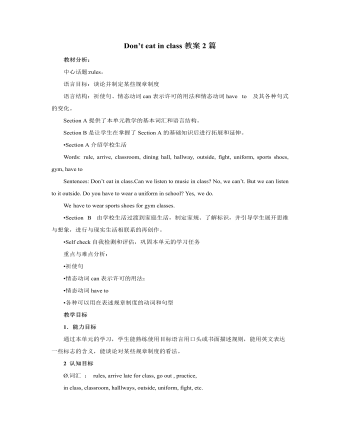
人教版新目标初中英语七年级下册Don’t eat in class教案2篇
- 页数:21页
- |大小:111.50KB
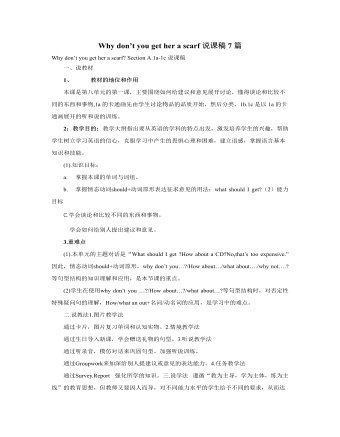
人教版新目标初中英语八年级下册Why don’t you get her a scarf说课稿7篇
- 页数:31页
- |大小:446.50KB
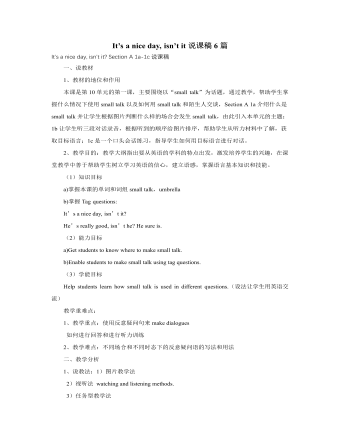
人教版新目标初中英语八年级下册It’s a nice day, isn’t it说课稿6篇
- 页数:23页
- |大小:130.00KB
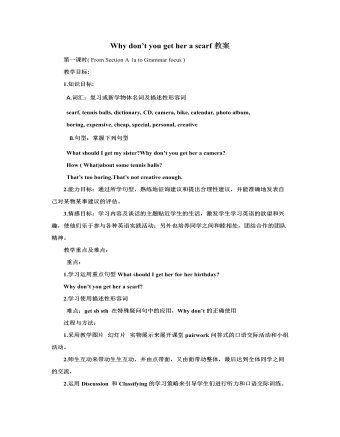
人教版新目标初中英语八年级下册Why don’t you get her a scarf教案
- 页数:13页
- |大小:86.00KB
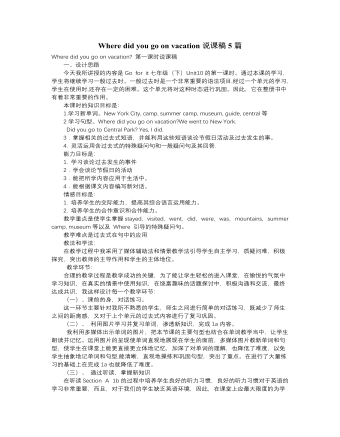
人教版新目标初中英语七年级下册Where did you go on vacation说课稿5篇
- 页数:16页
- |大小:152.50KB
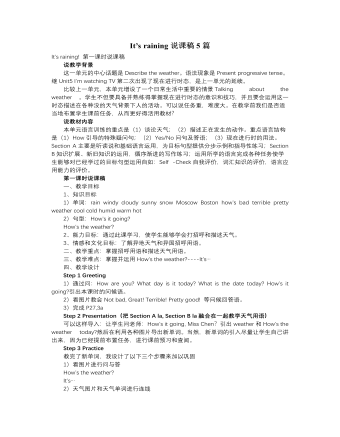
人教版新目标初中英语七年级下册It’s raining说课稿5篇
- 页数:21页
- |大小:144.50KB
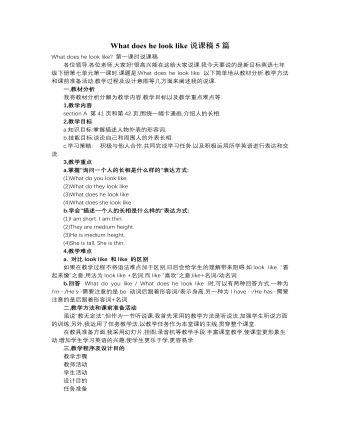
人教版新目标初中英语七年级下册What does he look like说课稿5篇
- 页数:15页
- |大小:95.50KB
热门说课稿
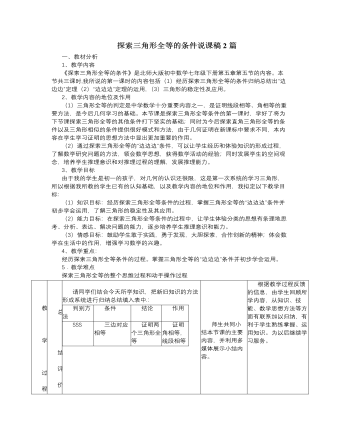
北师大版初中七年级数学下册探索三角形全等的条件说课稿2篇
- 页数:10页
- |大小:110.50KB
- 说课稿
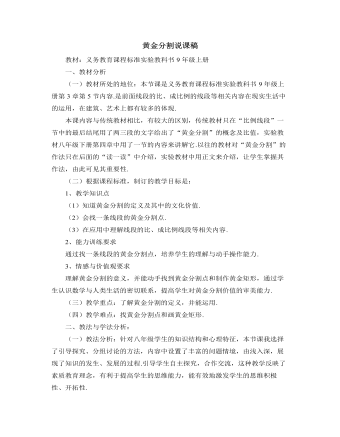
北师大版初中数学九年级上册黄金分割说课稿
- 页数:6页
- |大小:69.50KB
- 说课稿
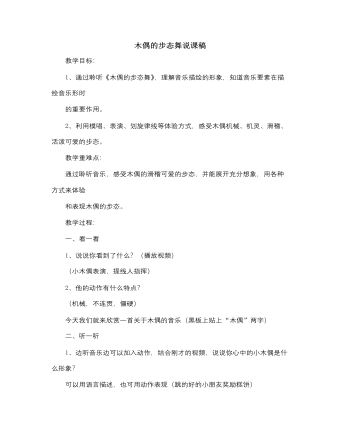
人音版小学音乐三年级下册木偶的步态舞说课稿
- 页数:4页
- |大小:34.00KB
- 说课稿
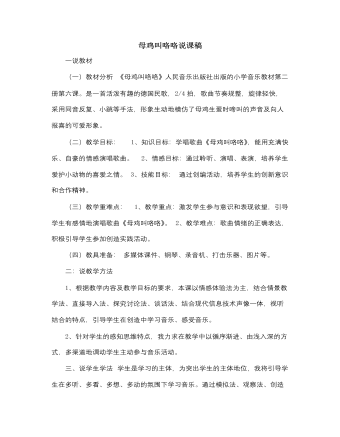
人音版小学音乐二年级上册母鸡叫咯咯说课稿
- 页数:4页
- |大小:38.00KB
- 说课稿
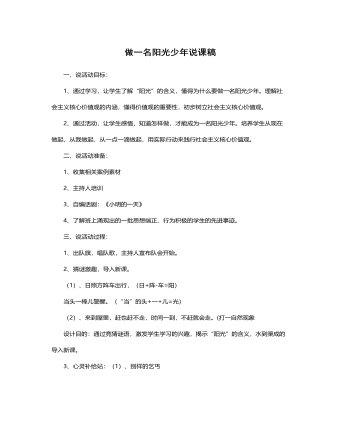
做一名阳光少年说课稿
- 页数:4页
- |大小:24.83KB
- 说课稿
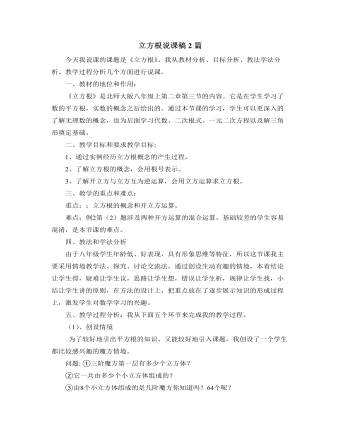
北师大版初中八年级数学上册立方根说课稿2篇
- 页数:9页
- |大小:154.50KB
- 说课稿
今日更新
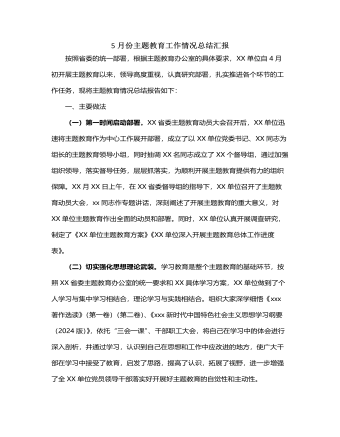
5月份主题教育工作情况总结汇报
- 页数:3页
- |大小:136.87KB

××县招商局2024年上半年工作总结
- 页数:12页
- |大小:142.54KB
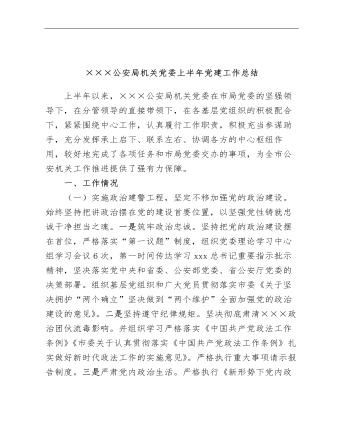
×××公安局机关党委上半年党建工作总结
- 页数:7页
- |大小:186.25KB

《2019—2024年全国党政领导班子建设规划纲要》实施情况的工作总结3800字
- 页数:6页
- |大小:29.16KB
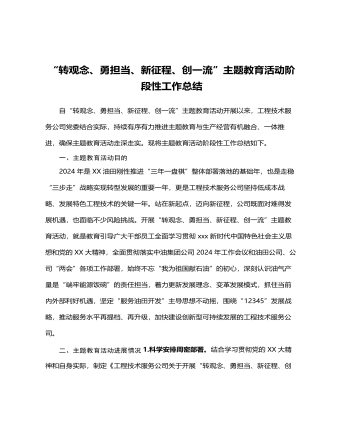
“转观念、勇担当、新征程、创一流”主题教育活动阶段性工作总结
- 页数:3页
- |大小:22.76KB

“四零”承诺服务创建工作总结
- 页数:5页
- |大小:39.83KB






